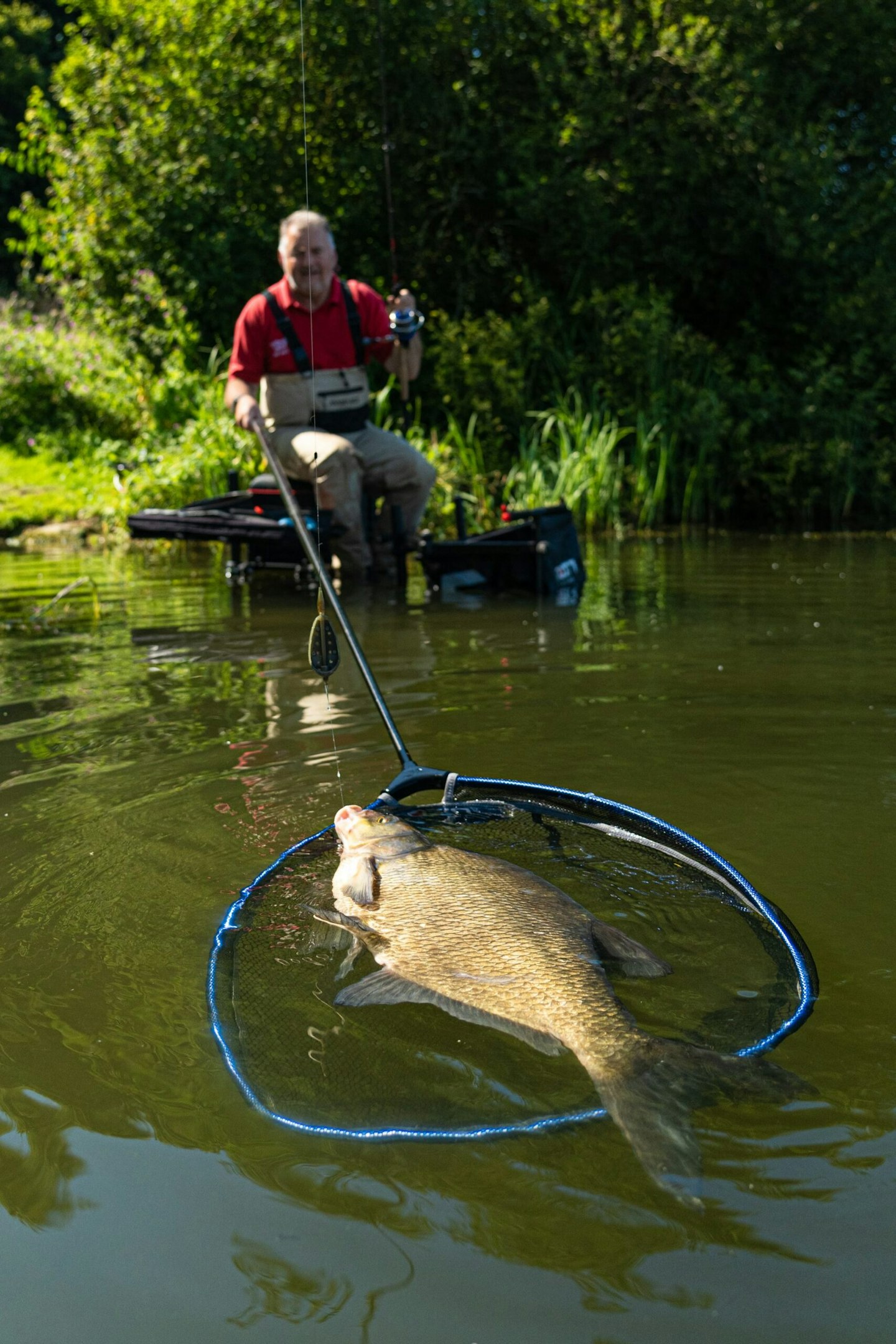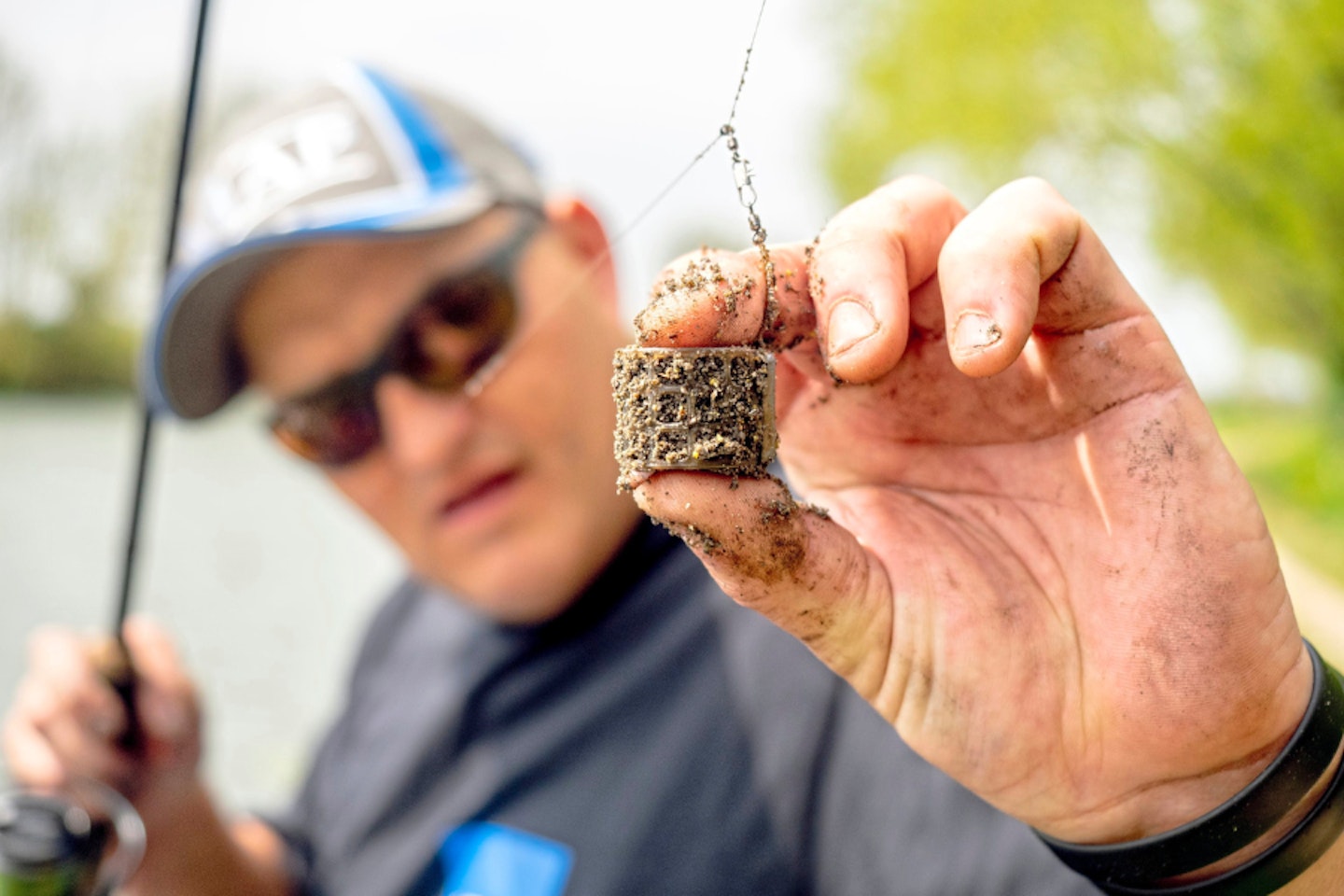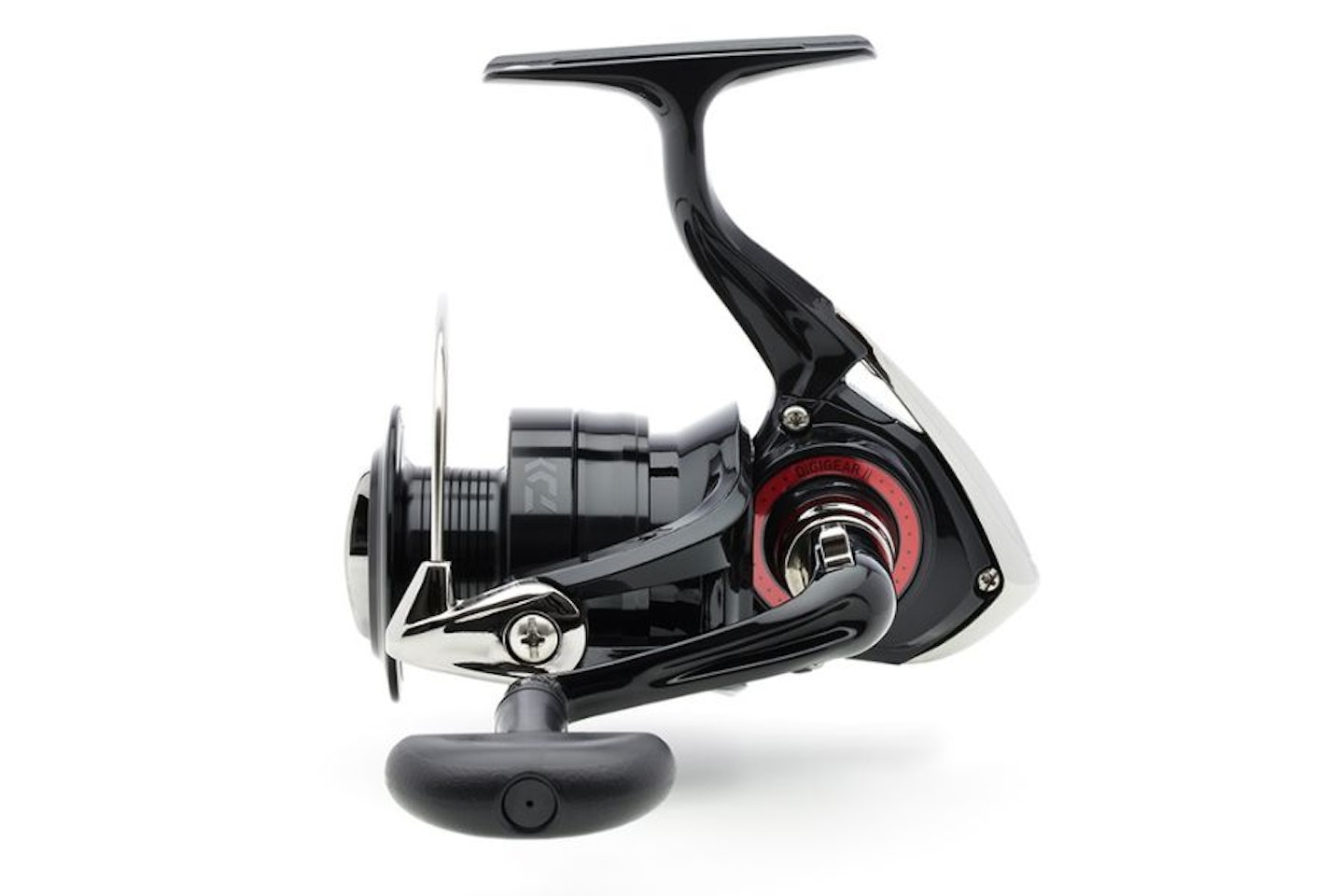There’s a certain appeal to feeder fishing. It requires precision and a constant tweaking of tactics, and once you’ve got the hang of it, it’s one of the most satisfying ways to spend a few hours on the bank.
If you’re new to fishing and want to get started with feeder fishing, this article will guide you through the first steps. What it is, what you need and how to catch your first fish on the feeder.
This isn’t a jargon-filled guide designed to confuse you. It’s an on the bank look at what feeder fishing is, how to get started, and you never know, it might just become your new obsession.
WE PICK OUR CHOICE OF THE BEST FISHING RODS FOR BEGINNERS IN THIS GUIDE.

What Is feeder fishing?
At its core, feeder fishing is a method of catching fish by using a feeder, a cage or block-end device that delivers groundbait or pellets right next to your hookbait.
When the float doesn’t seem to be producing or the wind’s making it difficult to control your rig, or just plain impractical to fish with a float, or those situations you need to target an area that’s simply out of reach of the float or pole, that’s when feeder fishing comes into its own.
The feeder sits on the lake or riverbed, slowly releasing tempting attraction around your hookbait. Carp, bream, skimmers, tench, roach… most fish can’t resist a free meal falling through the water column and settling on the bottom.
MAKE SURE YOU SET UP YOUR FEEDER ROD PROPERLY WITH THIS HELPFUL GUIDE.

Why is feeder fishing great for beginners?
Feeder fishing teaches you a lot, quickly. You’ll learn about fish behaviour, bite indications, timing, casting accuracy, and an anglers most important asset watercraft, all without becoming overwhelmed. It's less intimidating than watching a float you're struggling to spot at distance. And once you get that first proper wrap-around bite, the rod tip bent double, you’ll understand the buzz.
Plus, for feeder fishing, you don’t need to mess around with pole pots or catapults, you don’t need to loosefeed every two minutes, although it can be an effective tactic at the right time, and it works brilliantly year-round. Cold water, warm water, still or flowing, there’s always a way to make the feeder work for you.
HERE ARE OUR PICKS OF THE BEST FEEDER FISHING REELS.

Feeder fishing setup
Let’s not overcomplicate things. You don’t need deep pockets to buy the kit. Here’s the kind of setup that’ll get you catching from the off.
Rod
A 10ft to 11ft feeder rod is spot-on for commercial lakes and stillwaters. Look for something rated up to 50g plenty of backbone for casting a decent feeder but still soft enough to play fish on light lines.
The Daiwa Matchman Mini Method is a gem of a rod. After carefully looking over the minimalistic ceramic-lined stainless steel guides, screw down cork reel seat with cork handle and EVA lower, all appeared to be what I’d expect for a sub-£100 rod, let alone a sub £50 one.
In fact, the mini Method Feeder rod was indiscernible from many high-end rods just from a mere inspection and a waggle. It was at this point that the names troubled me a little, as pigeonholing these rods into a ‘Method Feeder’ category is a shame, as the range would make ideal all-round feeder rod for any kind of venue, not just commercials.
If you are new to feeder fishing, this rod is incredibly capable and exceptional value, you won't regret getting one!
Read our full Daiwa Matchman 9ft Mini Method review.
Pros
- Lovely fish playing action.
- Perfect for commercials.
Cons
- Will struggle to cast a larger feeder any distance.
| Casting weight: | 30g |
| Tips supplied: | Carbon 1oz and 1.5oz |
Reel
A 3000 or 4000-sized reel with a smooth drag. Don’t overthink it, if it looks solid and has a smooth operation, it will do the job well.
Best feeder fishing reel for beginners

www.total-fishing-tackle.com
The Daiwa 23 Matchman Reel is a very impressive item of tackle, it's really hard to believe you will get the reel and change from £50. The range covers three sizes, including a 2500 model, which is compact and great for lure fishing or light float work, it is also great for kids or beginners.
When it comes to feeder fishing, these reels have all the power needed to retrieve feeders and big fish, whether you are catching carp on a commercial or barbel on the river. The 3000 is better suited to smaller waters and Method feeder work, with the 4000 being just about perfect for all styles of feeder fishing you are likely to try when you start fishing!
Pros
- Great range of reels for all styles of angling
- 4000 model ideal for any feeder fishing
Cons
- No spare spool
Line
Start with a decent 6lb to 8lb monofilament. It’s forgiving, relatively cheap, and perfect for getting your confidence up.
Feeder
A simple feeder rig consists of an open-ended feeder, or a Method feeder. Stick with 20–30g to begin with, master close in first, no need to go to the horizon just yet. A simple running feeder rig or inline method feeder will catch fish anywhere.
Hooks and rigs
Ready-tied hooklengths take all the stress out of preparation. Use a quick-change bead or hooklength swivel and the loop in the hooklength will connect it to the bead or swivel.
Bait
The best baits for feeder fishing include micro pellets, groundbait, sweetcorn, maggots, or a bit of luncheon meat (where allowed), all cheap, easy to prep, and fish love ‘em.
Finding the right spot
You don’t need to fish in the middle of the lake to catch. In fact, many of the best fish are caught just a few rod-lengths out. Look for features like an island, a reedbed, a marginal shelf as fish love to patrol these kinds of areas.
Feeder fishing rewards rhythm, especially on commercials and if you’re not getting bites, cast every 5-10 minutes to try and instigate some action. Trust the process, consistent casting, builds a bed of bait on the bottom, so when the fish show up, they have a reason to stay in your swim.
On natural venues, you’ll need a little more patience and persistence, the numbers of fish to attract may be a little less but when they do arrive it’s just as rewarding.
SIT COMFORTABLY ON ONE OF THE BEST FEEDER FISHING CHAIRS.

Early lessons you’ll learn (that we all did)
Your first cast might land in the tree behind you. Your second might go 50 yards past your target. Your third might end up in your lap. Don’t worry, we’ve all been there.
One of the biggest challenges is to get your groundbait mixed correctly, you'll know if it's wrong as your feeder will still be full when you reel it back in, or it will fall out before you cast.
The more you use the feeder, you’ll learn when a bite’s a proper take or just a liner. You’ll get a feel for when your feeder's emptying right and when to recast, when to wait, and when to strike.








